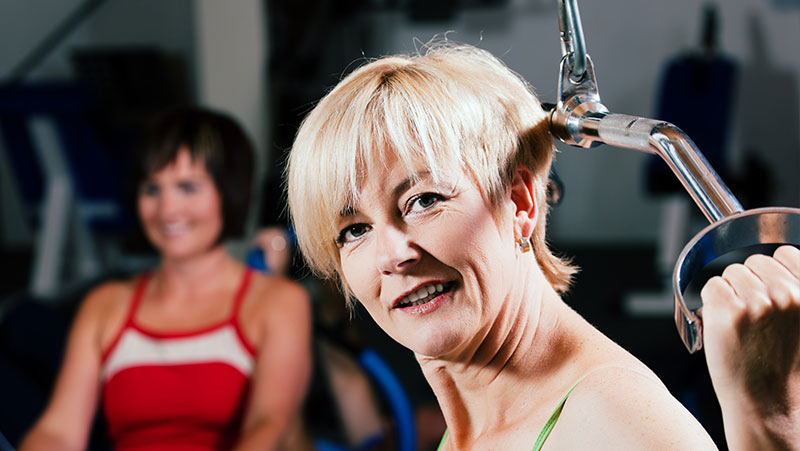4 exercises you should stop doing NOW

A number of popular exercise moves or routines have been debunked by fitness experts as not only ineffective, but potentially harmful.
While these common exercises may appear simple and safe, fitness trainers no longer recommend them. That’s because they involve movements that may lead to injury of your joints or muscles — particularly when performed incorrectly.
Four exercises to avoid (along with alternative moves that are less risky and more effective)
Bench dips
Dips are considered a classic move to work your triceps. But when you do them from a bench, your palms are facing forward with your arms by your sides. The internal rotation required of your shoulders when doing bench dips can easily lead to shoulder injuries. This exercise can also make existing shoulder pain worse.
Alternative exercise: Do your dips from parallel bars rather than from a bench. When your hands are parallel to each other, it corrects your shoulder positioning, which will help you avoid injury while still giving your triceps a workout.
Lateral pull downs (behind the head)
If you’re used to doing the circuit in the weight room, then you’re familiar with the lat machine — and you’ve probably seen people using it the wrong way. This popular strength-training move requires that you pull down on a horizontal bar to strengthen your arms. However, some people pull the bar down behind their neck with each lift. This old-school move — which was taught as correct technique before coaches recognized the problems with it — can cause injury in your shoulders or rotator cuffs. In fact, if you already have poor posture, limited flexibility, and rounded shoulders from too much time sitting at your desk, the behind-the-head pull down may worsen your misalignment.
Alternative exercise: You can still use this machine; just change the way you pull the bar down. Fitness experts recommend pulling the bar in front of your shoulders, not behind them, for safety. Focus on proper form as you do the exercise. Your spine should be straight and you should lean back slightly. Pull the bar down towards your chest, but not below your collarbone.
Abdominal crunches/sit-ups
Crunches are a workout favorite — but they can be dangerous, according to some strength and conditioning coaches. The repeated spinal flexion required when doing a crunch or sit-up can lead to back strain, much the same way that lifting from your back and not your knees can cause injury.
Alternative exercise: Instead of sit-ups, try reverse curl-ups to strengthen your lower abs. You can think of curl-ups as doing sit-ups in reverse — you move your knees to your chin instead of chin to knees. Try to center your movement on your lower back rather than moving from your hips.
Subscribe to our newsletter
It's quick and easy. You could be one of the 13 million people who are eligible.
Already a member? Click to discover our 15,000+ participating locations.
Follow Us
Leg extensions
Many gym goers use the leg extension machine to work their quadriceps muscles. It looks easy enough — just sit down, hook your feet under the padded bar, grasp the side handles for stability, and lift the weight up from your knees. Unfortunately, this standardized machine relies on a movement that we don’t do in our daily lives. (Fitness experts call this a “non-functional movement.”) Additionally, the motion required puts too much stress on the back of your knees, which could exacerbate knee pain or cause new injuries.
Alternative exercise: To work your quads more safely, try the leg press. As with all strength-training machines, form is important. After getting seated in the machine, be sure to bend your knees at about a 90-degree angle. Then check your back posture; the back of your head should rest against the seat bench, as should your back and hips. When you press the weight with your feet, push down from heel to toe. Don’t lock your knees when you extend your legs. Lower the weight back down slowly.
Remember, just because you see others doing an exercise doesn’t mean it’s a good one — or a safe one — to try. Over time, as more research on exercise physiology reveals the pros and cons of certain moves, fitness experts change the guidance about which moves may do more harm than good. If in doubt, ask a trainer at the gym for advice and assistance. Your doctor or physical therapist also may have ideas about types of workouts to avoid if you have specific injuries, health conditions, or other physical limitations.
Sources:
- http://www.mensfitness.com/training/pro-tips/4-exercises-you-shouldnt-be-doing
- http://www.mayoclinic.org/healthy-living/fitness/multimedia/lat-pull-down/vid-20084683
- http://www.exercise.wsu.edu/resistance/display.aspx?id=144
- http://www.menshealth.com/fitness/posture
- http://www.huffingtonpost.com/2014/08/04/exercise-fitness-expert-pet-peeves_n_5641513.html
- http://www.simplebackpain.com/best-exercises-for-lower-abs.html#axzz3DQ8E3gvi
- http://www.evanekman.com/articles.php?a=14
- http://www.huffingtonpost.com/2012/08/28/fix-your-form-how-to-exercise-leg-press_n_1833521.html
- http://www.shapefit.com/muscle-building-front-vs-rear-pulldowns.html
- http://www.sparkpeople.com/resource/fitness_articles.asp?id=1097





